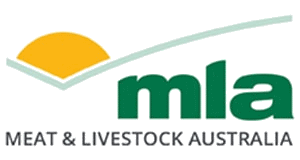Rental goats deliver weed solution
18 February 2025
 Elisabeth Larsen with her goats Image: Rob Evans
Elisabeth Larsen with her goats Image: Rob Evans
Elisabeth Larsen and Jim Shields run a goat herd with a difference – producers across southern NSW can rent their goats to control weeds on their own properties.
The unique service was born from Elisabeth's background as an ecologist, which has afforded her a different perspective when considering weed control using goats.
The ecological benefits goats can deliver are significant, particularly through their ability to control woody weeds, although the goats must be managed well to optimise their potential.
“Goats are browsers and have the ability to utilise woody plants and weeds not typically eaten by other livestock such as cattle and sheep,” Elisabeth said.
“They have a very efficient digestive system and are highly dexterous grazers which allows them to consume a wide variety of different plant species. In addition, goats happily work in steep and rocky terrain which would be unsafe and inaccessible for people and machinery.”
Herds for hire
Elisabeth hires her goats out for 3–4 months of the year.
The goats are dispatched from a holding block in the Bega Valley – the herd size is variable depending upon the weed control task being undertaken but usually there are about 30 goats contained within temporary fencing to apply intense grazing pressure.
Elisabeth is very careful when agreeing to rent the goats for weed control.
“Foremost is animal welfare. If I have any concerns that their needs cannot be met, I will not let them go,” she said.
Biosecurity
Elisabeth's goats have been across the coastal zone of south-east NSW and along the edge of Lake Burley Griffin in the ACT, primarily for the control of blackberry, as well as fireweed, wandering trad (Tradescantia fluminensis), privet and other common weeds.
As the goats are regularly moved between different blocks of land, biosecurity is an important consideration. Elisabeth ensures the reporting requirements associated with the Livestock Production Assurance, National Vendor Declaration and National Livestock Identification System programs are carried out to ensure the ongoing integrity of her business as well as her clients.
Site criteria
Every site is different, so Elisabeth always carries out a thorough site assessment which focuses on the key aspects of goat management for weed control.
This includes:
- Site security: Can the goats be contained safely? Can risks (dogs, people, traffic) be managed properly?
- Vegetation distribution: Is there a variety of palatable and nutritious plants available? Are any toxic plants present? (Just one leaf of plants like thornapple or green cestrum can be fatal.) Are there any threatened or endangered native species present that need to be protected from grazing?
- Animal welfare: Do the goats have plenty of room to move about freely? Is there a sunny area for them to rest, ruminate and dust bathe? Is it a wetland or boggy area that will cause feet problems? Are internal parasites in check?
- Client expectations: Does the client understand the impact goats will have? Are they aware that follow-up mechanical or chemical control may be required?
“These are some of the factors which should be considered by landholders before using goats for weed control,” Elisabeth said.
Grazing management
Once a site and objective are agreed, Elisabeth uses portable electric fencing or fencing panels, often in combination with existing permanent fencing, to create areas where the grazing pressure can be high enough to achieve the desired control.
“We use a cell grazing pattern so larger areas are broken up into smaller grazing blocks to achieve the appropriate grazing pressure.”
Within the portable grazing areas, Elisabeth always provides shelter to protect from sun and chill risks, and water is supplied using portable tubs that are regularly checked.
Elisabeth doesn't breed goats but instead buys young goats from a trusted breeder – the Boer and Boer-cross wethers are typically calm and easy to handle. Selection for temperament reinforces ease of handling which is important for the business.
The goats must be familiar with electric fencing before they are used for weed control elsewhere.
Her advice is to ensure fences are well maintained, tall and taut, and to reinforce with additional posts if necessary.
“Don't give the goats the opportunity to jump the fence – if they can, they will thanks to their quick intelligence and natural curiosity. Once one goat escapes, the rest of the herd will often follow the leader,” Elisabeth said.
Interested in hiring?
Elisabeth recommends developing a clear and realistic plan before embarking upon weed control using goats.
“Carry out a thorough assessment of the site and be realistic about what you will be able to achieve with the goats,” she said.
“Expect that you might have to follow up with mechanical and/or chemical control measures if you are aiming for complete weed eradication.”


